 American Herring Gull (smithsonianus)
American Herring Gull (smithsonianus)
(last update: October 30, 2015)
American Herring Gull adult December
Canadian Atlas of Bird Banding Volume 2: Seabirds, 1921–1995.(Gaston et al., 2008) Herring Gull (Larus argentatus) 51.0

| Banding Location | Encounter Location | Band Number | Number of encounters represented | ||
|---|---|---|---|---|---|
| Latitude | Longitude | Latitude | Longitude | ||
| 50.33 | 97.50 | 45.33 | 73.67 | 66645530 | 1 |
| 50.33 | 97.50 | 47.33 | 91.17 | 66645532 | 1 |
| 50.33 | 97.50 | 48.33 | 71.67 | 60675430 | 1 |
| 50.33 | 100.50 | 48.83 | 94.33 | 376918 | 1 |
| 51.33 | 96.67 | 48.50 | 93.33 | 60685124 | 1 |
| 51.83 | 97.00 | 26.17 | 97.67 | 34661407 | 1 |
| 52.67 | 107.17 | 40.00 | 95.17 | 36807202 | 1 |
| 54.50 | 124.67 | 38.33 | 121.67 | 87604803 | 1 |
| 61.17 | 149.83 | 49.17 | 123.00 | 64689147 | 3 |
| 64.50 | 101.50 | 33.17 | 115.50 | 51645708 | 1 |

| Banding Location | Encounter Location | Band Number | Number of encounters represented | ||
|---|---|---|---|---|---|
| Latitude | Longitude | Latitude | Longitude | ||
| 32.67 | 79.83 | 44.50 | 65.67 | 70684300 | 1 |
| 42.83 | 79.50 | 15.67 | 87.33 | 56682520 | 20 |
| 43.17 | 79.83 | 40.17 | 74.00 | 89608380 | 407 |
| 44.17 | 76.17 | 21.00 | 101.00 | 49630004 | 2 |
| 44.33 | 73.33 | 45.50 | 73.33 | 52645590 | 2000 |
| 44.33 | 81.33 | 39.83 | 74.00 | 72654331 | 31 |
| 44.50 | 66.67 | 46.50 | 14.00 | 36648130 | 1 |
| 44.67 | 81.33 | 20.00 | 104.00 | 51640016 | 1 |
| 45.00 | 80.33 | 28.50 | 81.33 | 40658679 | 358 |
| 45.00 | 80.33 | 42.50 | 80.67 | 37607136 | 63 |
| 45.00 | 83.17 | 46.17 | 83.17 | 73678108 | 2000 |
| 45.17 | 86.83 | 66.17 | 128.50 | 2638233 | 1 |
| 45.17 | 87.00 | 55.00 | 59.17 | 4624020 | 30 |
| 45.33 | 83.67 | 44.50 | 78.17 | 72634348 | 2000 |
| 45.33 | 86.67 | 49.83 | 105.67 | 34530118 | 7 |
| 46.00 | 82.50 | 19.17 | 81.33 | 62670565 | 20 |
| 46.00 | 83.17 | 21.00 | 101.00 | 2566012 | 4 |
| 46.00 | 83.33 | 32.33 | 80.67 | 61648587 | 84 |
| 47.17 | 52.67 | 60.50 | 45.67 | 58610801 | 2 |
| 47.33 | 54.17 | 19.67 | 70.33 | 82625713 | 1 |
| 47.33 | 54.17 | 49.67 | 54.17 | 82630773 | 147 |
| 50.00 | 66.33 | 10.83 | 60.83 | 52687812 | 2 |
| 50.17 | 59.50 | 20.00 | 96.66 | 38655911 | 1 |
| 50.17 | 59.50 | 31.50 | 81.83 | 1701526 | 18 |
| 50.17 | 59.50 | 41.33 | 82.17 | 37632228 | 1 |
| 50.17 | 59.67 | 47.17 | 61.83 | 422196 | 153 |
| 50.17 | 60.17 | 21.00 | 101.00 | 40656624 | 1 |
| 50.17 | 60.17 | 37.67 | 76.17 | 38655679 | 37 |
| 50.17 | 60.50 | 49.50 | 56.83 | 34629490 | 172 |

| Banding Location | Encounter Location | Band Number | Number of encounters represented | ||
|---|---|---|---|---|---|
| Latitude | Longitude | Latitude | Longitude | ||
| 31.00 | 81.50 | 47.67 | 53.17 | 65685986 | 1 |
| 31.00 | 81.50 | 47.67 | 64.67 | 65685978 | 1 |
| 39.50 | 74.17 | 49.00 | 64.67 | 88606842 | 1 |
| 40.50 | 73.83 | 48.67 | 58.83 | 88672936 | 2 |
| 41.50 | 83.33 | 49.00 | 97.50 | 38724264 | 1 |
| 42.33 | 71.00 | 50.17 | 66.33 | 64645337 | 1 |
| 42.50 | 80.00 | 43.67 | 86.33 | 60684645 | 8 |
| 42.83 | 70.50 | 53.67 | 101.33 | 65677686 | 1 |
| 43.00 | 70.67 | 44.67 | 63.17 | 66657233 | 8 |
| 43.00 | 71.33 | 50.83 | 56.00 | 93670415 | 1 |
| 43.67 | 79.33 | 49.83 | 98.17 | 34656932 | 1 |
| 43.83 | 77.67 | 43.00 | 79.00 | 86689198 | 10 |
| 44.33 | 81.33 | 41.33 | 82.33 | 85691330 | 12 |
| 44.33 | 81.33 | 42.83 | 79.17 | 85691322 | 21 |
| 44.50 | 66.67 | 37.33 | 75.83 | 38672169 | 13 |
| 44.50 | 66.67 | 40.50 | 73.67 | 44618338 | 21 |
| 44.50 | 66.67 | 41.50 | 70.17 | 38672444 | 48 |
| 44.83 | 68.67 | 47.50 | 53.50 | 63697266 | 5 |
| 45.33 | 83.67 | 48.17 | 70.83 | 80672538 | 1 |
| 47.17 | 52.67 | 48.50 | 58.83 | 60685621 | 1 |
| 48.67 | 88.33 | 43.17 | 86.17 | 78631704 | 2 |

| Banding Location | Encounter Location | Band Number | Number of encounters represented | ||
|---|---|---|---|---|---|
| Latitude | Longitude | Latitude | Longitude | ||
| 44.50 | 66.67 | 46.50 | 14.00 | 36648130 | 1 |
| 64.90 | 13.63 | 49.65 | 54.67 | 216727 | 1 |
The Herring Gull is a circumpolar superspecies with many closely related forms distributed throughout northern North America, Europe, and central and northern Asia (Perrins and Snow 1998). The subspecies represented in North America, L. a. smithsonianus, breeds around the Great Lakes, along the eastern seaboard from North Carolina to Labrador, beside lakes and rivers throughout the boreal zone, and on Low Arctic tundra from Alaska to Labrador. It is the commonest large gull of eastern Canada, but is scarcer on the Pacific coast (nesting in coastal and northern British Columbia) and in the interior, where it breeds widely in Manitoba, but only in the north of Saskatchewan and Alberta (Salt and Salt 1976).
Herring Gulls winter on the Pacific coast from southeast Alaska to Mexico, in the Great Lakes region, and on the east coast from the Gulf of St. Lawrence and Newfoundland to the southern United States and throughout the Caribbean. Breeding-age birds of the Great Lakes and east coast populations winter within the breeding range (Pierotti and Good 1994).
Banding effort has concentrated on chicks, chiefly in colonies in Atlantic Canada and the Great Lakes. With over 100 000 banded and more than 10 000 encounters, this species dwarfs all others except the Ring-billed Gull in the richness of data available. These data have been the subject of a greater number of, and of more detailed, publications than are available for any other North American seabird. Hence, this account is mainly a précis of previous work.
The earliest treatment of North American Herring Gull banding was provided by Eaton (1933, 1934a, 1934b), who dealt with encounters from banding at Grand Manan, New Brunswick, and Bonaventure Island and the North Shore of the Gulf of St. Lawrence, Quebec, as well as several sites in the United States. Threlfall (1978) and Gross (1940) analyzed recoveries of birds banded in Atlantic Canada (Newfoundland and New Brunswick, respectively); Gross (1940) also compared New Brunswick recoveries with those of birds banded in the Great Lakes. Kadlec and Drury's (1968) analysis included the population of Atlantic Canada. Southern (1968), Moore (1976), Gilman et al. (1977), and Weseloh (1984) analyzed recoveries of birds banded in the Great Lakes region.
Throughout their distribution, encounters are concentrated along waterways and coasts and in cities; like Glaucous-winged Gulls, Herring Gulls are great garbage eaters and concentrate where people do. Most encounters were in the region of banding. Among long-distance encounters, the majority were in Florida, Louisiana, and Texas. Young birds from both the Great Lakes and the East Coast were encountered more or less throughout the winter range. However, those from Atlantic Canada predominated in Florida (61%, n = 203, record 1) and were less important in Texas (30%, n = 107, record 2) and Mexico (5%, n = 41); one bird each reached Honduras (record 3) and Cuba; those from Ontario made up 66% of encounters in Mexico (record 4), 50% in Honduras (plus one in El Salvador, record 5, and four in Cuba, record 6), 24% of those in Texas, but only 18% of those in Florida. Birds from Quebec, mainly the North Shore of the Gulf of St. Lawrence, were intermediate, comprising 21% of encounters in Florida, 19% of those in Texas, and 10% of those in Mexico (records 7 and 8); one came from Honduras (record 9). The vast majority of these southern encounters were of birds in their first year.
In November, the main southward movement of young birds in eastern North America begins abruptly; over the next month, the mean distance of encounter of first-year birds doubles (from 366 to 727 km). Firstyear and subadult gulls move south on a broad front from the Mississippi valley to the Atlantic coast, reaching the Gulf coast, Mexico, and Central America by January and February. A higher proportion of subadults winters on the eastern Great Lakes than on the western lakes. There is a steady decline in recovery distances with age, so that adult Herring Gulls (3 years and older) are virtually resident year-round within the Great Lakes region; only in March are 10% or more of adult encounters outside the breeding range. The spring return of young birds begins in March; by May, 68% of juvenile recoveries are within the breeding range.
Threlfall (1978) analyzed encounters of eastern Herring Gulls banded in several rapidly growing colonies in Witless Bay, Newfoundland, from 1966 through 1972. Fifty-eight percent of recoveries were on Newfoundland, and 75% of those encountered in their first year were encountered within 6 months of banding. They showed a wide general dispersal after fledging, including a substantial northward movement (one as far as Greenland, record 10). By winter (December–March), most first-year birds had moved to the eastern seaboard of the United States, especially the New York region; the average movement in winter was about 1450 km, with one bird reaching the Dominican Republic (record 11). Second- and thirdyear birds moved shorter distances, and adults least of all (about 56% of the distance moved by 2-year-olds). Adults also showed a different seasonal pattern of recovery, with a peak between March and September within 65 km of the colony and another from November to May in New England. Many adults were recaptured or resighted at the colony where they had been banded.
Threlfall (1978) also found that most of the encounters on Newfoundland of birds banded in the Great Lakes region occurred from August to October, supporting Moore's (1976) finding that some Great Lakes young move east and north, rather than south, after fledging, at the same time that many Newfoundland young move south and west to New England. The lack of encounters of locally banded Herring Gulls in winter on Newfoundland shows that most of the large numbers wintering there originate from elsewhere. Many may be from farther north, where there has been little banding; few can be from the Great Lakes, as birds banded there winter much farther south.
Eaton (1933, 1934a, 1934b), dealing with colonies in New Brunswick and the Gulf of St. Lawrence, was the first to determine that first-year birds often migrate substantial distances, to the southern United States and Mexico, in winter, while breeding-age birds remain mostly in the vicinity of their breeding areas. Similar results were reported by Astle and McAlpine (1985) for birds breeding in New Brunswick. Gross (1940) compared recoveries of birds banded on Kent Island, New Brunswick (Bay of Fundy), with those banded in the Great Lakes region. In all age groups, Kent Island birds appeared to move a little farther, probably partly because more Great Lakes birds than Kent Island birds wintered locally. The substantial wintering population of Herring Gulls in the Bay of Fundy, like that on Newfoundland, is evidently not of local origin. Kent Island birds often dispersed north after fledging, before moving south, as Newfoundland ones did; recoveries north of the banding site were between August and December, with none from January to March. Most adults wintered on the eastern U.S. coast between Maine and the Carolinas; the heavy concentration of recoveries along the coast differs from that of Great Lakes birds, which are centred along inland waterways, especially the St. Louis, Mississippi, and Ohio rivers and their tributaries. Birds from Kent Island were encountered as far apart as Honduras (record 3) and the northeast Atlantic off Spain (record 12).
Moore (1976) analyzed recoveries of birds banded in the Great Lakes region and recovered through 1971. He found some differences between birds originating west and east of longitude 85°W, i.e., the junctions of Lake Huron with lakes Michigan and Superior. First-year birds were recovered mainly between August and October and showed some northward dispersal like other populations, despite the scarcity of people to report the bands north of the Great Lakes. During fall and early winter — and only then — many "western"-banded birds moved into the eastern lakes. Eastern birds did not move west, but many were encountered northeast in Ontario and Quebec, some as far as the Gulf of St. Lawrence and Newfoundland.
Herring Gulls are very important indicators of environmental pollution in the Great Lakes (see, for example, Mineau et al. 1984), so it has been necessary to establish whether adult Herring Gulls are confined to the Great Lakes basin. The vast majority (>99%) of the more than 12000 encounters of Great Lakes Herring Gulls reviewed by Weseloh (1984) came from within that region. Moreover, birds more than 3 years old were rarely encountered away from the Great Lakes basin, and there were very few encounters in the Great Lakes basin of birds banded elsewhere. Weseloh (1984) concluded that the Great Lakes population is more or less isolated from other North American Herring Gull populations. Gilman et al. (1977) used recoveries to examine movement within the Great Lakes system and found that most recoveries were on the same lake where they were banded, although there was some movement from Lake Superior to Lake Michigan and some emigration of colonizers from lakes Superior and Huron to Lake Michigan and from Lake Erie to Lake Superior. Herring Gulls breeding in western Canada (west of 95°W) remain mainly west of the Mississippi River, except those from southern Manitoba, which move to the Great Lakes and farther east.
Survival has been estimated from band recoveries in several studies, reviewed by Kadlec and Drury (1968) and Kadlec (1975), who found that previous estimates of band loss (which confounds the calculating of survival rates) were much too high, and that only 3% of bands are lost within 7 years. The rapid growth of Herring Gull populations during the eriod of most banding effort, combined with the species' long lifespan (up to 40 years or more in captivity) and the likelihood that gulls may outlive their bands, has made it very difficult to construct reliable life-tables from band recovery data. However, the very large number of encounters suggests that the observed longevity record for North American Herring Gulls of at least 27 years and 3 months, estimated by Clapp et al. (1982) (record 13), may be close to the true maximum life expectancy of the species. Although seven encounters were of birds 20 or more years of age, less than 5% of birds encountered were more than 10 years old: the vast majority were in their first 2 years of life.
One encounter of an Iceland-banded gull (record 14) presumably refers to the race L. a. argentatus that has not previously been identified in Canada (Godfrey 1986). Correspondingly, the recovery off Spain (record 12) constitutes the first record of the North American race L. a. smithsonianus in European waters; in recent years, there have been a number of sight records of this subspecies in Ireland, all in first-winter plumage (P. Smiddy, pers. commun.). Not a single encounter has been reported in Canada of the nearly 300000 Herring Gulls banded in Britain.
Summary of banding statistics: Herring Gull
| Age at banding | |||||
|---|---|---|---|---|---|
| Hatch Year | After Hatch Year | Any Age | |||
| No. of Canadian bandings (1955-1995) | 0 | 0 | 123680 | ||
| No. encountered per 1000 banded (1955-1995) | 0 | 0 | 37 | ||
| Total no. encountered (1921-1995) | 9735 | 477 | 10707 | ||
| No. encountered from foreign bandings | 2410 | 43 | 2602 | ||
| Maximum period from banding to encounter (mo.) | 301 | 314 | 314 | ||
| No. of Canadian-banded birds moving > 0 km | 6098 | 287 | 6701 | ||
| Mean movement > 0 km of Canadian-banded birds | 611 | 239 | 614 | ||
| Maximum movement from all encounters (km) | 4821 | 3035 | 4821 | ||
| % recovered (encountered dead) | 94 | 74 | 93 | ||
| % direct recoveries | 54 | 17 | 52 | ||
| % encountered during banding operations | 1 | 12 | 2 | ||
Banding effort: Herring Gull
| Region | Total Banded |
|---|---|
| Alberta | 5 |
| British Columbia | 108 |
| Northwest Territories | 107 |
| Manitoba | 339 |
| New Brunswick | 11569 |
| Newfoundland and Labrador | 21984 |
| Nova Scotia | 766 |
| Ontario | 65728 |
| Prince Edward Island | 419 |
| Quebec | 23257 |
| Saskatchewan | 50 |
| Yukon Territory | 28 |
| Total | 124360 |
Great Lake birds
East coast birds
 American Herring Gull (smithsonianus) 6cy-7cy C17 2010 & 2011, near Appledore Island, NH. Picture: Justin Stilwell & Jon Worthen.
American Herring Gull (smithsonianus) 6cy-7cy C17 2010 & 2011, near Appledore Island, NH. Picture: Justin Stilwell & Jon Worthen. American Herring Gull (smithsonianus) C47 10CY & 12CY, January 2014 & December 2016, Brooklyn, NY. Picture: Sean Sime & Andrew Baksh.
American Herring Gull (smithsonianus) C47 10CY & 12CY, January 2014 & December 2016, Brooklyn, NY. Picture: Sean Sime & Andrew Baksh. American Herring Gull (smithsonianus) adult C71 2009, 2010 & 2011, Salisbury State Reservation, MA.
American Herring Gull (smithsonianus) adult C71 2009, 2010 & 2011, Salisbury State Reservation, MA. American Herring Gull (smithsonianus) M2 adult, December 18 2015, Quidi Vidi Lake - St John's. Picture: Frank King.
American Herring Gull (smithsonianus) M2 adult, December 18 2015, Quidi Vidi Lake - St John's. Picture: Frank King.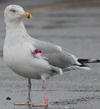 American Herring Gull (smithsonianus) adult AFP December 23 2013, Suffolk County, New York. Picture: Angus Wilson.
American Herring Gull (smithsonianus) adult AFP December 23 2013, Suffolk County, New York. Picture: Angus Wilson. American Herring Gull adult, December 11 2013, Stevenson compost, Tompkins Co, NY. Picture: Kevin McGowan.
American Herring Gull adult, December 11 2013, Stevenson compost, Tompkins Co, NY. Picture: Kevin McGowan.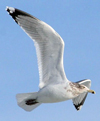 American Herring Gull (smithsonianus) adult, December 26 2007, Rochester, NH, USA. Picture: Mike.
American Herring Gull (smithsonianus) adult, December 26 2007, Rochester, NH, USA. Picture: Mike. American Herring Gull (smithsonianus) adult, December 26 2007, Rochester, NH, USA. Picture: Mike.
American Herring Gull (smithsonianus) adult, December 26 2007, Rochester, NH, USA. Picture: Mike. American Herring Gull (smithsonianus) adult, December 26 2007, Rochester, NH, USA. Picture: Mike.
American Herring Gull (smithsonianus) adult, December 26 2007, Rochester, NH, USA. Picture: Mike. American Herring Gull (smithsonianus) adult, December 26 2007, Rochester, NH, USA. Picture: Mike.
American Herring Gull (smithsonianus) adult, December 26 2007, Rochester, NH, USA. Picture: Mike.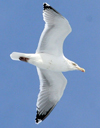 American Herring Gull (smithsonianus) adult, December 26 2007, Rochester, NH, USA. Picture: Mike.
American Herring Gull (smithsonianus) adult, December 26 2007, Rochester, NH, USA. Picture: Mike. American Herring Gull (smithsonianus) adult, December 26 2007, Rochester, NH, USA. Picture: Mike.
American Herring Gull (smithsonianus) adult, December 26 2007, Rochester, NH, USA. Picture: Mike. American Herring Gull (smithsonianus) adult, December 26 2007, Rochester, NH, USA. Picture: Mike.
American Herring Gull (smithsonianus) adult, December 26 2007, Rochester, NH, USA. Picture: Mike. American Herring Gull (smithsonianus) adult, December 26 2007, Rochester, NH, USA. Picture: Mike.
American Herring Gull (smithsonianus) adult, December 26 2007, Rochester, NH, USA. Picture: Mike.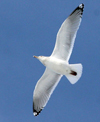 American Herring Gull (smithsonianus) adult, December 26 2007, Rochester, NH, USA. Picture: Mike.
American Herring Gull (smithsonianus) adult, December 26 2007, Rochester, NH, USA. Picture: Mike. American Herring Gull (smithsonianus) adult, December 26 2007, Rochester, NH, USA. Picture: Mike.
American Herring Gull (smithsonianus) adult, December 26 2007, Rochester, NH, USA. Picture: Mike.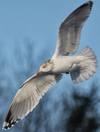 American Herring Gull adult, December 12 2013, Stevenson compost, Tompkins Co, NY. Picture: Kevin McGowan.
American Herring Gull adult, December 12 2013, Stevenson compost, Tompkins Co, NY. Picture: Kevin McGowan. American Herring Gull adult, December 12 2013, Stevenson compost, Tompkins Co, NY. Picture: Kevin McGowan.
American Herring Gull adult, December 12 2013, Stevenson compost, Tompkins Co, NY. Picture: Kevin McGowan.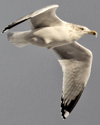 American Herring Gull adult, December 16 2013, Stevenson compost, Tompkins Co, NY. Picture: Kevin McGowan.
American Herring Gull adult, December 16 2013, Stevenson compost, Tompkins Co, NY. Picture: Kevin McGowan. American Herring Gull adult, December 09 2013, Stevenson compost, Tompkins Co, NY. Picture: Kevin McGowan.
American Herring Gull adult, December 09 2013, Stevenson compost, Tompkins Co, NY. Picture: Kevin McGowan. American Herring Gull adult, December 12 2013, Stevenson compost, Tompkins Co, NY. Picture: Kevin McGowan.
American Herring Gull adult, December 12 2013, Stevenson compost, Tompkins Co, NY. Picture: Kevin McGowan. American Herring Gull adult, December 09 2013, Stevenson compost, Tompkins Co, NY. Picture: Kevin McGowan.
American Herring Gull adult, December 09 2013, Stevenson compost, Tompkins Co, NY. Picture: Kevin McGowan. American Herring Gull (smithsonianus) adult, December 08 2013, St. John's, Newfoundland, Canada. Picture: Greg Froude.
American Herring Gull (smithsonianus) adult, December 08 2013, St. John's, Newfoundland, Canada. Picture: Greg Froude. American Herring Gull (smithsonianus) adult, December 09 2011, Spring Point - South Portland, Maine. Picture: Bill Bunn.
American Herring Gull (smithsonianus) adult, December 09 2011, Spring Point - South Portland, Maine. Picture: Bill Bunn. American Herring Gull (smithsonianus), adult, December 30 2012, Salisbury, MA. Picture: Suzanne Sullivan.
American Herring Gull (smithsonianus), adult, December 30 2012, Salisbury, MA. Picture: Suzanne Sullivan. American Herring Gull (smithsonianus) adult, December 09 2012, Macworth Island, Falmouth, Maine. Picture: Bill Bunn.
American Herring Gull (smithsonianus) adult, December 09 2012, Macworth Island, Falmouth, Maine. Picture: Bill Bunn.West coast birds
 American Herring Gull (smithsonianus) adult, December 09 2010, Rio del Mar, California, USA. Picture: Jeff Poklen.
American Herring Gull (smithsonianus) adult, December 09 2010, Rio del Mar, California, USA. Picture: Jeff Poklen.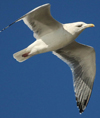 American Herring Gull adult, December 10 2013, Half Moon Bay, California. Picture: Alvaro Jaramillo.
American Herring Gull adult, December 10 2013, Half Moon Bay, California. Picture: Alvaro Jaramillo.Great Lakes birds
South coast birds
 American Herring Gull (smithsonianus) adult, December 31 2014, Thompson Bait Camp, Baytown, TX. Picture: Jan.
American Herring Gull (smithsonianus) adult, December 31 2014, Thompson Bait Camp, Baytown, TX. Picture: Jan. American Herring Gull (smithsonianus) adult, December 27 2014, Thompson Bait Camp, Baytown, TX. Picture: Jan.
American Herring Gull (smithsonianus) adult, December 27 2014, Thompson Bait Camp, Baytown, TX. Picture: Jan.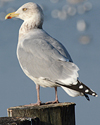 American Herring Gull (smithsonianus) adult, December 27 2014, Thompson Bait Camp, Baytown, TX. Picture: Jan.
American Herring Gull (smithsonianus) adult, December 27 2014, Thompson Bait Camp, Baytown, TX. Picture: Jan. American Herring Gull (smithsonianus) adult, December 31 2014, Thompson Bait Camp, Baytown, TX. Picture: Jan.
American Herring Gull (smithsonianus) adult, December 31 2014, Thompson Bait Camp, Baytown, TX. Picture: Jan. American Herring Gull (smithsonianus) adult, December 26 2014, Thompson Bait Camp, Baytown, TX. Picture: Jan.
American Herring Gull (smithsonianus) adult, December 26 2014, Thompson Bait Camp, Baytown, TX. Picture: Jan.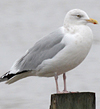 American Herring Gull (smithsonianus) adult, December 20 2014, Thompson Bait Camp, Baytown, TX. Picture: Jan.
American Herring Gull (smithsonianus) adult, December 20 2014, Thompson Bait Camp, Baytown, TX. Picture: Jan.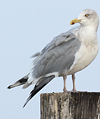 American Herring Gull (smithsonianus) adult, December 27 2014, Thompson Bait Camp, Baytown, TX. Picture: Jan.
American Herring Gull (smithsonianus) adult, December 27 2014, Thompson Bait Camp, Baytown, TX. Picture: Jan.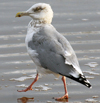 American Herring Gull (smithsonianus) adult, December 09 2012, Surfside Beach, Follett's Island, Texas. Picture: Tripp Davenport.
American Herring Gull (smithsonianus) adult, December 09 2012, Surfside Beach, Follett's Island, Texas. Picture: Tripp Davenport.other taxa
 Western Gull (occidentalis) 6CY 24xxxx5December 28 2012, Piedras Blancas Elephant Seal Rookery, CA. Picture: Chuq von Rospach.
Western Gull (occidentalis) 6CY 24xxxx5December 28 2012, Piedras Blancas Elephant Seal Rookery, CA. Picture: Chuq von Rospach.